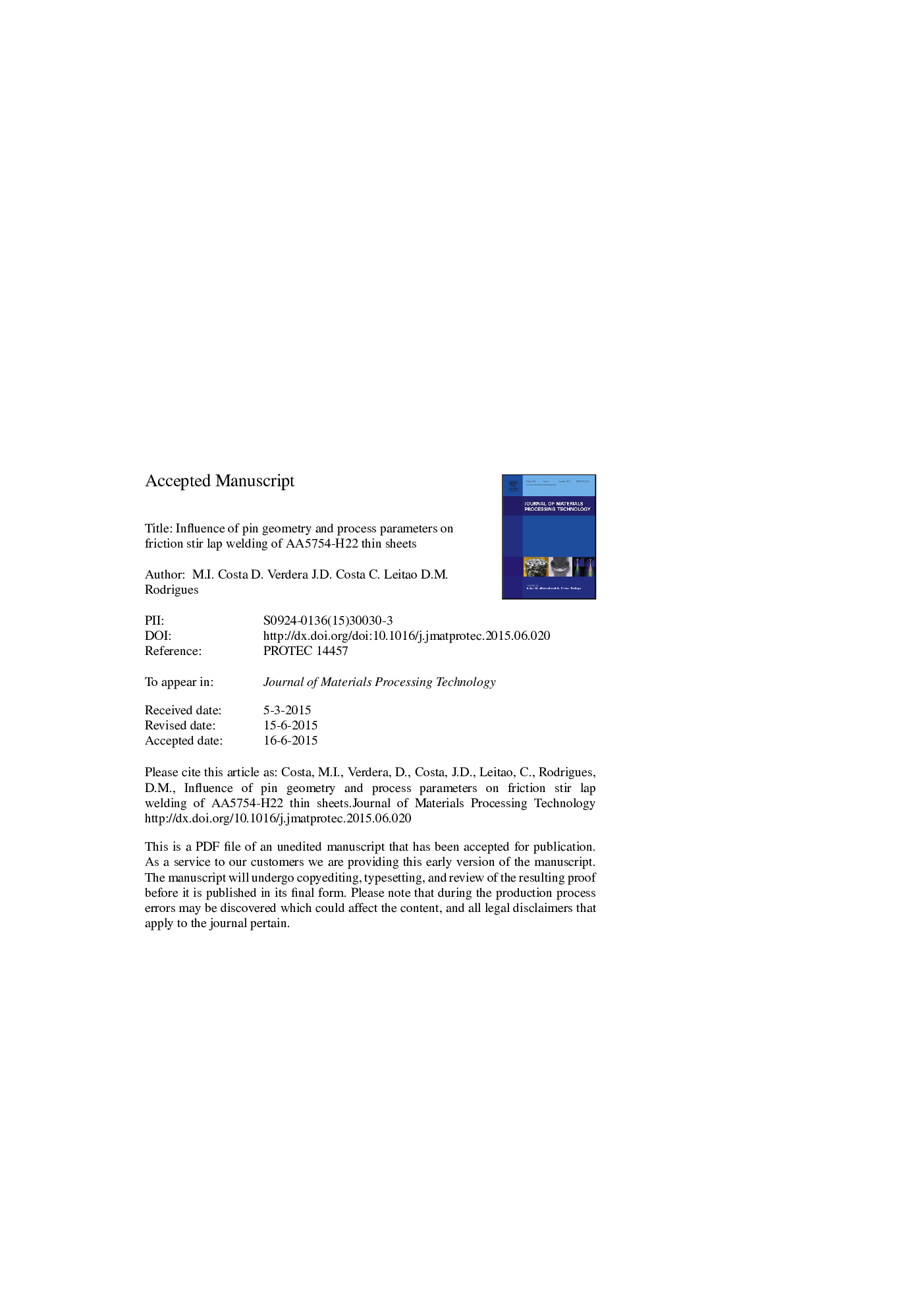| Article ID | Journal | Published Year | Pages | File Type |
|---|---|---|---|---|
| 7176993 | Journal of Materials Processing Technology | 2015 | 23 Pages |
Abstract
The influence of pin geometry and process parameters on the morphology and strength of friction stir lap welds, in very thin sheets, is analysed. The base material is the AA5754-H22 work hardened aluminium alloy. Three different pin geometries were tested, one cylindrical and two conical, with different taper angles. For each pin geometry, varying welding speeds, ranging from 350 to 1000Â mm/min, were tested in order to simultaneously weld properties and process productivity. Weld defects assessment was performed using metallographic analyses. strength was by performing mechanical tests both monotonic and cyclic loading conditions. Monotonic tests included performing transverse and lap tensile-shear tests. Strain data acquisition using Digital Image Correlation (DIC) enabled to determine local weld properties as the joints failure mode monotonic loading. The results show that the use of unthreaded conical pin tools, with a low shoulder/pin diameter relation, is the more suitable solution for the production of good quality welds. Irrespective of the pin geometry, very high joint strength efficiencies (close to 90%) were obtained when loading the retreating side of the welds. It is also shown that good quality welds may be produced at very high welding speeds.
Related Topics
Physical Sciences and Engineering
Engineering
Industrial and Manufacturing Engineering
Authors
M.I. Costa, D. Verdera, J.D. Costa, C. Leitao, D.M. Rodrigues,
